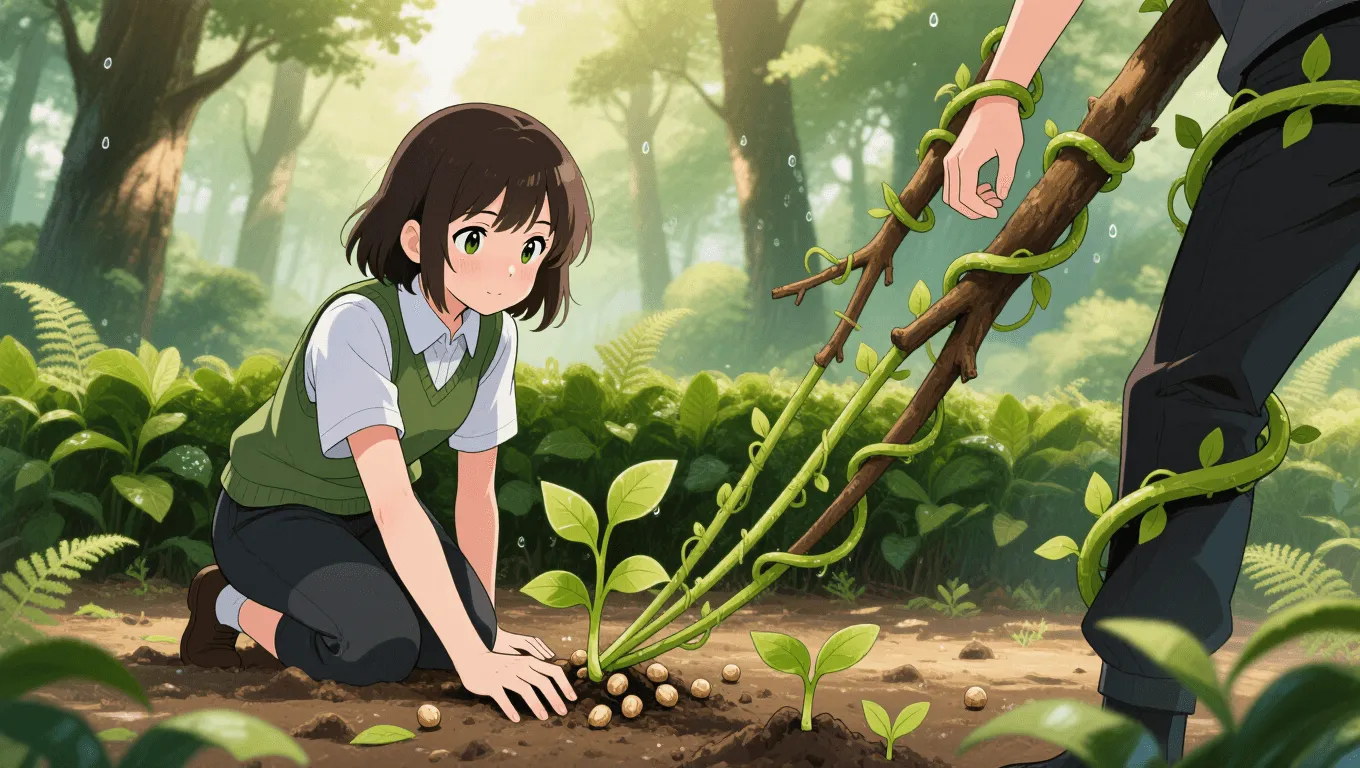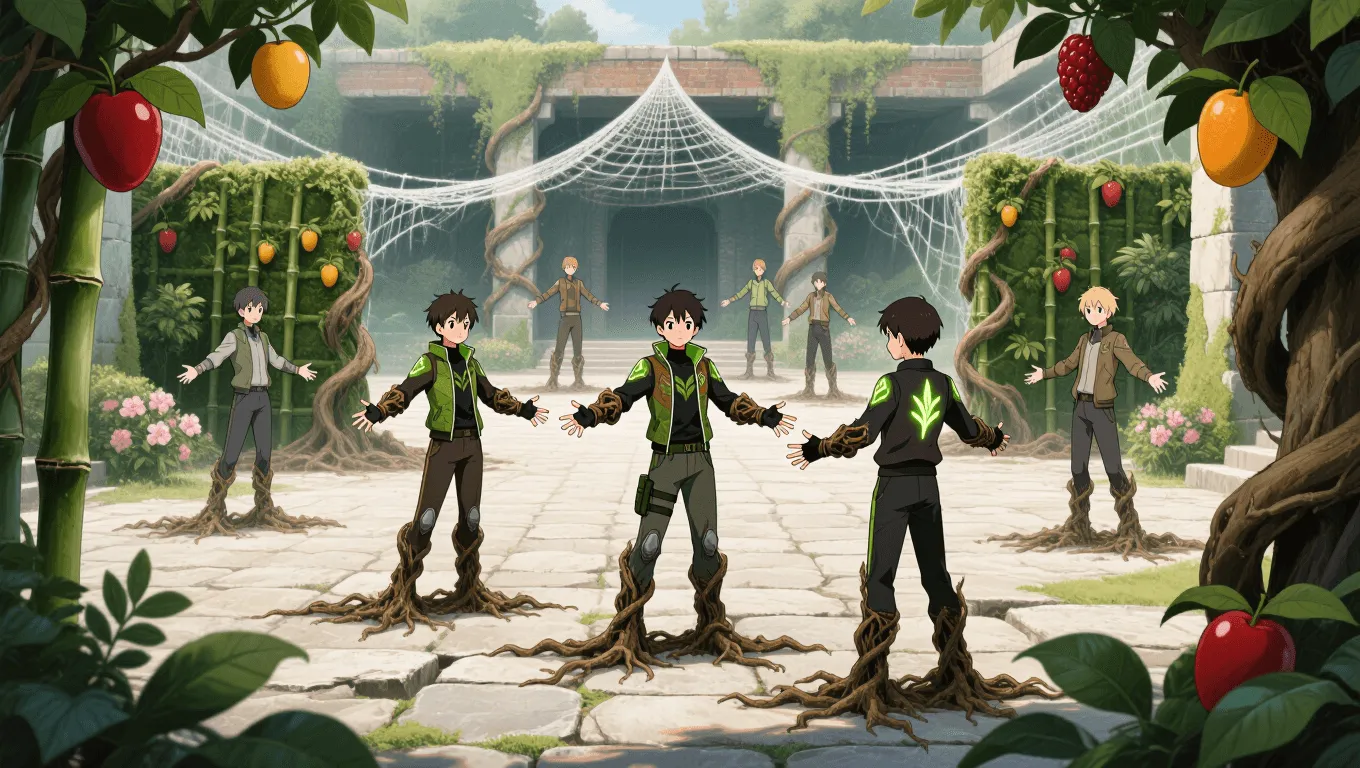Plant Growth Acceleration: The Complete Guide

Plant Growth Acceleration Video Demo 🎬
Table of Contents
- Plant Growth Acceleration Video Demo 🎬
- What Is Plant Growth Acceleration
- Core abilities of Plant Growth Acceleration
- Application / Tactical Advantages in Combat
- Level: Level 1 🏙️, Level 2 🌇, Level 3 🌃
- Limitations of using the Plant Growth Acceleration
- Weakness against what other superpowers
- Synergistic Power Combos
- Known Users
Plant Growth Acceleration is a nature-based ability that lets a user stimulate, amplify, and direct biological growth in plants at will. Unlike broad chlorokinesis or general plant manipulation, this power focuses on rapid germination, vegetative surge, and targeted bloom control—turning seeds, vines, and roots into instant tools for defense, mobility, and battlefield control. For a wider catalog of nature and elemental talents, explore the Superpower Wiki, or spark ideas with the Random Superpower Generator.
What Is Plant Growth Acceleration
Plant Growth Acceleration is the capacity to dramatically speed up plant development—from seed to sprout to sprawling canopy—within seconds. Users channel photosynthetic energy and biochemical cues that mimic auxins, gibberellins, and other plant hormones, then amplify them to produce time-lapse growth in real time. In many settings this talent is grouped with chlorokinesis, florakinesis, phytokinesis, or agrokinetic abilities, but its hallmark is precision speed: instantaneous vines for entanglement, pop-up thorn hedges for fortification, and explosive root expansion to fracture terrain or anchor structures.
Because the power acts on living flora (and plantlike organisms such as algae, lichens, or fungal–plant symbiotes, depending on the universe), it doubles as an environmental toolkit. Practitioners can terraform small areas, accelerate reforestation, boost crop yields, and repair ecosystems by stimulating botanical regeneration—so long as resources like light, water, and soil nutrients are available.
Core abilities of Plant Growth Acceleration
Rapid Germination and Sprouting
Users can pop seeds to life on command, pushing them past dormancy into rapid cell division. This enables immediate cover, camouflage, or a living toolset—seed bombs that erupt into nets, or emergency rations from fast-fruiting species.
Vegetative Surge and Canopy Expansion
With a directed pulse, stems elongate, leaves unfurl, and vines snake outward. Vegetative organs can be grown into ladders, bridges, or suspended platforms. On the micro-scale, ivy can drape across a wall within moments; on the macro-scale, bamboo-like culms can rocket several meters to create barricades or make-shift scaffolding.
Root Network Command
Roots thicken, braid, and tunnel. The user can split asphalt, wedge open doors, anchor buildings in a storm, or stitch soil on a landslide. In stealthy operations, root mats can undermine enemy footing or silently lift pressure plates to disarm traps.
Directed Blooming and Fruiting
By modulating “hormonal” signals, the wielder triggers blossoms on cue—handy for signaling, scent-based lures, or pollinator summons. In survival scenarios, they can ripen fruits for nutrition or medicine, catalyzing alkaloid-rich tissues for field remedies (setting-appropriate).
Vine Control and Entanglement
Plant Growth Acceleration excels at fast vine growth. Lash-vines can coil into whips, bolas, or living tethers; thorned canes become non-lethal crowd control. This overlaps with classic vine control but remains rooted in accelerated biomass production.
Regenerative Overgrowth
Damaged flora can be mended. Shredded hedges re-knit, snapped boughs re-graft, and storm-torn groves recover. In some settings, this extends to botanical self-healing—outfitting the user with bramble armor that regrows as fast as it’s cut.
Terrain Shaping and Micro-Terraforming
Within a controlled radius, the user can raise hedgerows, plant walls, and root ramparts, creating choke points and safe lanes. In humanitarian use, they can stabilize dunes, curb erosion, and re-green barren strips.
Botanical Sensing (Secondary)
While not universal, many users feel through plant tissues, detecting vibrations, heat gradients, or chemical stress signals across a “green network.” This passive eco-awareness pairs with growth spurts to investigate or redirect threats.
Application / Tactical Advantages in Combat
Area Denial and Crowd Control
Instant thickets, briar belts, and creeping mats funnel opponents into predictable lanes. Thorny lattices impose movement penalties while preserving non-lethal intent.
Non-Lethal Restraint
Accelerated vines bind wrists, ankles, and weapons. Root cuffs sprout from soil to immobilize without lasting harm—ideal for guardians bound by strict ethics.
Mobile Cover and Shielding
Leafy bulwarks soak up shrapnel and obscure line of sight. Woody growth hardens into trunk-like shields that can be regrown after impacts, functioning as a renewable cover system.
Verticality and Mobility
Grown ladders, swing-vines, or springy sapling “catapults” add fast vertical access. In dense biomes, the user traverses canopies with living zip-lines.
Sensory Obfuscation
Pollen clouds and aromatic blooms disrupt scent tracking and, with consent and care, can calm crowds via terpene blends (setting-appropriate). Dense foliage also muffles sound and absorbs thermal signatures.
Resource Denial
Roots fracture pipelines or clog intakes; creeping plants jam exposed hinges and vents. While reversible, such actions can disable vehicles or turrets long enough to disengage.
Environmental Support
In survival and rescue, instant shade drops heat stress, while succulent growth stores water. Strong creepers can cradle debris, preventing secondary collapses during extraction.
Level: Level 1 🏙️, Level 2 🌇, Level 3 🌃
Level 1

Beginners can germinate small seeds and push vines a few meters. Effects require direct contact or short range and thrive only with good light and moisture. Typical feats include growing a waist-high hedge in under a minute, mending a snapped branch, or tying down a single opponent with a fresh vine.
Level 2

Intermediates operate across a room or courtyard, summoning dense foliage and root webs that reshape terrain. They can harden growth for brief armor-like plating, ripen fruit in seconds, and coordinate multiple plant types simultaneously. Duration improves, allowing sustained area denial and mobile cover in dynamic fights.
Level 3

Masters green entire blocks. They trigger forest-scale surges, weave living architecture, and orchestrate plant communities like a conductor. Root networks can lift streets, vines can bridge ravines, and blossoms respond to precise signals for scent camouflage or bee swarms (non-harmful guidance). At this level, the user balances might with ecological foresight to avoid runaway overgrowth.
Limitations of using the Plant Growth Acceleration
-
Resource Dependence: Growth needs energy. Without sunlight, water, minerals, and CO₂, biomass stalls. Underground or vacuum environments impose severe constraints unless the user can substitute with bio-energy reserves or artificial light sources.
-
Line-of-Effect and Medium: Many feats demand soil contact or seed stock. Metal decks, sterile labs, and concrete expanses reduce options unless cracks, containers, or carried seed pods exist.
-
Biological Boundaries: Species matter. Cacti excel at arid defense; epiphytes don’t root well in pavement. Exotic or alien flora may resist terrestrial cues.
-
Metabolic Cost: Pushing growth too fast taxes the user—fatigue, dehydration, or hypoglycemia can follow if their body fuels the acceleration.
-
Collateral Risks: Aggressive roots can rupture pipes or foundations; opportunistic vines can smother non-target flora. Ethical users must avoid ecological harm.
-
Control vs. Chaos: Unrefined surges create tangled hazards for allies. Fine motor control and training are crucial.
-
Countermeasures: Herbicides, desiccants, or fire suppressants can blunt results; sterile grounds and air filtration reduce pollen-based tactics.
Weakness against what other superpowers
Pyrokinesis and Heat Manipulation
Fire dries and combusts biomass. Even succulent barriers wilt under sustained heat. Thermal blasts also sterilize seed banks, limiting re-use.
Cryokinesis and Winter Control
Freezing ruptures plant cells and halts enzyme activity. Ice sheaths immobilize vines and make brittle hedges that shatter on impact.
Desiccation, Sand, and Wind Control
Rapid water loss neutralizes turgor pressure, causing droop and failure in living shields. Sand and abrasive winds grind leaves, while vacuum or arid microclimates stunt growth.
Acid, Corrosion, and Toxic Cloud Projection
Corrosives melt cellulose and lignin; toxic mists poison or denature tissues. Persistent chemical attacks outpace regenerative overgrowth.
Darkness, Shadow, and Light Negation
Dampened light reduces photosynthetic output. In pitch black, many plant tactics rely on stored energy or must pivot to fungal symbiosis—often slower and more limited.
Earth Manipulation (Hostile)
Geokinetic foes compact soil, salt substrates, or shift plates to sever roots mid-tunnel, countering terrain control with counter-terrain.
Blade Mastery and Telekinesis (Precision Cutting)
Razor winds, vibro-blades, or telekinetic micro-slices part vines faster than they regrow, exposing the caster.
Biological Decay and Necrotic Powers
Blight and rot turn living walls into mulch. Necrotic auras collapse overgrowth by accelerating senescence rather than growth.
Synergistic Power Combos
Hydrokinesis (Water Control)
Water availability is the growth throttle. A hydrokinetic partner irrigates, shapes flow for root uptake, and conjures mist canopies to maintain humidity—supercharging all plant tactics.
Photokinesis or Solar Amplification
Directed light ramps photosynthesis and strengthens chlorophyll-rich shields. Focused beams create “green batteries” that store energy for night operations.
Geokinesis (Earth Shaping)
Loosened, nutrient-rich soil plus raised berms or terraces turn growth into engineered fortifications. Minerals can be layered to harden living walls.
Air/Aerokinesis
Gentle winds spread seeds and spores; sudden gusts push vine nets, topple foes into root pits, and disperse scent screens.
Insect Manipulation | Entokinesis
Pollinator swarms accelerate fruiting and can carry micro-seeds into inaccessible spaces, creating delayed-activation snares.
Healing/Biomancy
A medic augments regenerative overgrowth, turning bramble armor into a self-mending exoshell and ensuring living barricades persist through repeated hits.
Sound/Vibration Control
Low-frequency pulses can guide root direction or collapse enemy footing into root meshes timed with growth surges.
Known Users
While “Plant Growth Acceleration” appears under many names across media, several characters famously embody rapid botanical expansion and battlefield greenery:
-
Poison Ivy — DC’s eco-genius often accelerates vines and blossoms to entrap foes and overrun urban zones.
-
Swamp Thing — An avatar of the Green capable of explosive, large-scale regrowth and instant plant architecture.
-
Groot — The sentient tree hero who extends limbs, sprouts protective canopies, and grows barriers on command.
-
Floronic Man — A botanical antagonist whose accelerated growth tactics can be both scientific and feral.
-
Dryads (mythology) — Tree-spirits in folklore often depicted nurturing or hastening forest growth.
-
Maokai — A game character who plants saplings and summons explosive growth in battle arenas.
Looking for more abilities that pair well with Plant Growth Acceleration superpower? Explore the full catalog in our superpower wiki, or spark character ideas with the random superpower generator.
